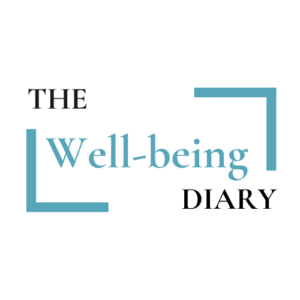The Ultimate Strength Training Guide for Women Over 40

Key Takeaways
Strength Training for Women Over 40: Benefits and How to Start
Strength training is essential for women over 40 to maintain health and mobility. Follow these key steps to build strength safely:
- Support bone health: Prevent osteoporosis with weight-bearing exercises
- Boost metabolism: Increase muscle mass for better calorie burn
- Improve hormone balance: Regulate estrogen, cortisol, and insulin
- Choose the right equipment: Dumbbells, resistance bands, or machines
- Follow a structured routine: Squats, lunges, push-ups, core exercises
- Progress gradually: Increase weights over time for consistent strength gains
- Prioritize recovery: Adequate protein, hydration, and rest are essential
By incorporating strength training into your fitness routine, you’ll enhance your mobility, metabolism, and overall well-being for years to come. Start today!
As women age, maintaining strength, mobility, and overall health becomes increasingly important. Strength training for women over 40 is a powerful way to boost metabolism, support bone health, and promote long-term wellness. Whether you’re new to resistance training or looking to refine your gym routine, this guide will provide the essential steps to help you build strength, maintain hormone balance, and enhance overall fitness.
Why Strength Training is Essential for Women Over 40
1. Supports Bone Health
Osteoporosis becomes a greater risk as we age, making weight lifting a key component of any anti-aging workout. Resistance exercises help maintain and even improve bone health, reducing the risk of fractures and injuries.
2. Boosts Metabolism and Aids Weight Loss
With age, metabolism naturally slows, making weight management more challenging. Engaging in muscle-building activities revs up the metabolism, ensuring more efficient calorie burn and weight loss.
3. Enhances Hormone Balance
Strength training helps regulate key hormones such as estrogen, cortisol, and insulin. By maintaining hormone balance, you can better manage stress, energy levels, and overall health.
4. Increases Muscle Mass and Strength
Aging can lead to muscle loss, impacting daily activities and overall mobility. Incorporating resistance training into your fitness plan helps maintain and build lean muscle mass, improving strength and endurance.
How to Get Started with Strength Training
1. Choose the Right Equipment
- Dumbbells: Great for home workouts and gym routines.
- Resistance Bands: Ideal for low-impact strength exercises.
- Barbells and Machines: Excellent for progressive overload and muscle building.
2. Follow a Structured Gym Routine
A well-rounded fitness for women plan should include:
- Upper Body Workouts: Push-ups, bicep curls, shoulder presses
- Lower Body Workouts: Squats, lunges, deadlifts
- Core Strengthening: Planks, leg raises, Russian twists
3. Focus on Progressive Overload
Gradually increasing weights or resistance ensures continued strength gains. Start with lighter weights and progressively challenge yourself to prevent muscle plateaus.
4. Prioritize Recovery and Nutrition
Muscle recovery is just as important as training. Ensure proper protein intake, hydration, and sufficient rest days to allow muscles to repair and grow.
5. Stay Consistent and Track Progress
Regular workouts and tracking improvements keep you motivated and highlight your progress. Keeping a journal or using a fitness app can help measure strength gains and weight loss.
Final Thoughts
Strength training isn’t just for aesthetics—it’s about longevity, functionality, and feeling your best. By integrating weight lifting and resistance training into your routine, you can enjoy the numerous benefits of fitness for women over 40, including enhanced bone health, a metabolism boost, and hormone balance.
Start your journey today and embrace the empowering effects of strength training for a healthier, stronger future!
FAQ
Why is strength training important for women over 40?
Strength training helps maintain bone density, boosts metabolism, regulates hormones, and prevents muscle loss, promoting overall health and longevity.
How often should women over 40 do strength training?
Aim for 2–4 strength training sessions per week, focusing on major muscle groups while allowing adequate recovery time between workouts.
What are the best strength training exercises for women over 40?
Effective exercises include squats, lunges, deadlifts, push-ups, bicep curls, shoulder presses, and core exercises like planks and leg raises.
Can strength training help with weight loss?
Yes! Strength training boosts metabolism, increases muscle mass, and enhances calorie burn, making it easier to manage weight and reduce body fat.
5. Do I need to lift heavy weights to see results?
Not necessarily. Progressive overload (gradually increasing resistance) is key. You can use dumbbells, resistance bands, or bodyweight exercises to build strength.
6. How does strength training improve bone health?
Weight-bearing exercises stimulate bone density and help prevent osteoporosis, reducing the risk of fractures and injuries as you age.
7. Can strength training help balance hormones?
Yes! Regular resistance training helps regulate estrogen, cortisol, and insulin levels, which can improve mood, energy, and stress management.
8. What’s the best way to start a strength training routine?
Begin with light weights or resistance bands, focus on proper form, and gradually increase intensity. A structured workout plan ensures steady progress.
9. How long does it take to see results from strength training?
Most women notice increased strength and energy within 4–6 weeks, with visible muscle tone and improved metabolism appearing after 8–12 weeks.
Is strength training safe for beginners over 40?
Absolutely! Start with low-impact movements, prioritize proper form, and listen to your body. Consulting a fitness professional can help ensure safe progression.
